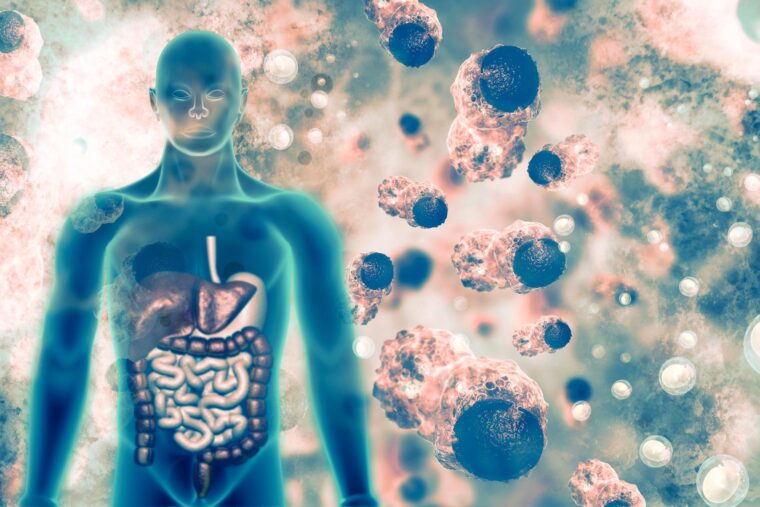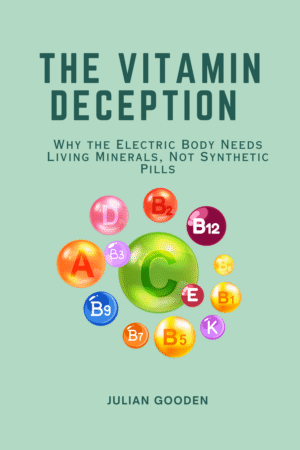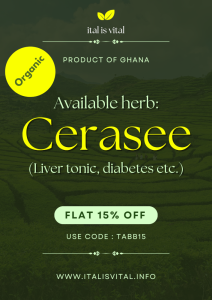Toxins in the body are classified into two main categories based on their solubility and behavior: water-soluble and fat-soluble. Below is an explanation of each category, including their characteristics, sources, elimination processes, health implications, and the body’s detoxification mechanisms, with additional details to provide a comprehensive understanding.
1. Water-Soluble Toxins
Definition: Water-soluble toxins are compounds that dissolve readily in water and are typically polar or ionic in nature. This property allows them to circulate easily in the bloodstream and other aqueous environments in the body, such as cellular fluids.
Characteristics:
- Solubility: Highly soluble in water-based fluids, which facilitates their transport through the bloodstream.
- Distribution: These toxins do not tend to accumulate in tissues because they remain in the bloodstream or extracellular fluids until eliminated.
- Chemical Nature: Often polar molecules or ions, making them less likely to penetrate cell membranes or fatty tissues.
Sources:
- Environmental Exposure: Heavy metals like arsenic, cadmium, and lead (in certain chemical forms, such as inorganic salts) can be water-soluble and enter the body through contaminated water, food, or air.
- Dietary and Lifestyle Factors: Alcohol (ethanol) and certain drugs or medications (e.g., some antibiotics, antihistamines, or chemotherapy drugs) are water-soluble due to their polar chemical structures.
- Metabolic By-Products: The body naturally produces water-soluble waste products during metabolism, such as urea (from meat, beans etc. breakdown – referred to as “proteins today”), ammonia, and excess electrolytes like sodium or potassium.
- Industrial and Household Chemicals: Some cleaning agents, solvents, or chemicals encountered in workplaces may contain water-soluble compounds that enter the body through inhalation or skin contact.
Elimination:
- Primary Route: The kidneys filter water-soluble toxins from the blood, excreting them through urine. The nephrons in the kidneys selectively remove these compounds while retaining essential substances.
- Secondary Routes: Some water-soluble toxins are eliminated through sweat (via the skin) or, to a lesser extent, through respiration (e.g., alcohol can be partially exhaled).
- Speed of Elimination: These toxins are typically cleared from the body relatively quickly, often within hours to days, depending on the toxin’s concentration, the individual’s hydration status, and kidney function.
Detox Organs Involved:
- Kidneys: Act as the primary filtration system, removing water-soluble toxins from the blood and forming urine.
- Liver: Plays a supportive role by metabolizing certain toxins into water-soluble forms through processes like conjugation (e.g., adding polar groups such as glucuronide or sulfate to make toxins more excretable).
- Skin: Contributes to minor toxin elimination through sweat, particularly for compounds like urea or salts.
- Lungs: Assist in eliminating volatile water-soluble toxins, such as alcohol, through exhalation.
Health Implications:
- Acute Effects: Water-soluble toxins can cause rapid symptoms if present in high concentrations, such as alcohol intoxication, heavy metal poisoning (e.g., nausea, neurological symptoms), or electrolyte imbalances.
- Chronic Effects: Prolonged exposure to low levels of water-soluble toxins (e.g., chronic arsenic exposure via drinking water) can lead to kidney damage, neurological issues, or systemic toxicity.
- Detox Support: Adequate hydration, a balanced diet, and healthy kidney function are critical for efficient elimination. Diuretics (preferably natural) may enhance excretion in some cases.
Examples:
- Heavy Metals: Inorganic forms of arsenic, cadmium, or lead dissolve in water and can be acutely toxic or accumulate over time if exposure is chronic.
- Alcohol: Rapidly absorbed into the bloodstream, metabolized by the liver into acetaldehyde (also water-soluble), and excreted via urine, sweat, or breath.
- Drugs and Medications: Polar drugs like metformin (used for diabetes) or penicillin are water-soluble and primarily cleared by the kidneys.
- Metabolic By-Products: Urea and ammonia, produced during metabolism of certain foods (from animal sources – like meat, eggs, and dairy or plant sources – like beans, lentils, nuts, and tofu), are filtered by the kidneys and excreted in urine.
2. Fat-Soluble Toxins
Definition: Fat-soluble (lipophilic) toxins dissolve in lipids or fats rather than water. These compounds tend to accumulate in the body’s fatty tissues, such as adipose tissue, cell membranes, and organs with high lipid content (e.g., the brain or liver).
Characteristics:
- Solubility: Highly soluble in fats and oils, making them prone to storage in lipid-rich tissues rather than circulating freely in the bloodstream.
- Distribution: These toxins can cross cell membranes easily due to their lipophilic nature and are stored in adipose tissue, making them harder to eliminate.
- Chemical Nature: Non-polar or minimally polar molecules, which resist dissolution in water-based fluids like blood or urine.
Sources:
- Environmental Pollutants: Persistent organic pollutants (POPs) like polychlorinated biphenyls (PCBs), dioxins, and organochlorine pesticides (e.g., DDT) are fat-soluble and enter the body through contaminated food, water, or air.
- Agricultural Chemicals: Pesticides like glyphosate residues or organophosphates can have fat-soluble components that persist in the environment and bioaccumulate in the food chain.
- Industrial Chemicals: Solvents, plasticizers (e.g., phthalates), and other industrial by-products may be lipophilic and enter the body through inhalation, ingestion, or skin contact.
- Food Additives and Preservatives: Certain synthetic food additives, such as butylated hydroxyanisole (BHA) or butylated hydroxytoluene (BHT), are fat-soluble and may accumulate in the body over time.
- Medications and Drugs: Lipophilic drugs, such as some anesthetics, sedatives (e.g., benzodiazepines), can accumulate in fatty tissues if not properly metabolized.
Elimination:
- Primary Route: The liver is the primary organ responsible for detoxifying fat-soluble toxins through a process called biotransformation. This involves two phases:
- Phase I (Oxidation/Reduction): Biological catalysts (e.g., cytochrome P450) modify the toxin’s structure to make it more reactive.
- Phase II (Conjugation): The liver adds polar groups (e.g., glucuronide, sulfate, or glutathione) to the toxin, converting it into a water-soluble form that can be excreted.
- Excretion Pathways: Once converted, fat-soluble toxins are excreted through bile (produced by the liver and stored in the gallbladder) into the intestines, where they are eliminated via stool. Some toxins may also be excreted in urine after conversion.
- Challenges: Fat-soluble toxins are difficult to eliminate because they are stored in adipose tissue and released slowly. This can lead to long-term accumulation, especially for persistent organic pollutants.
- Speed of Elimination: Elimination can take weeks, months, or even years, depending on the toxin’s persistence, the individual’s metabolism, and the body’s fat content.
Detox Organs Involved:
- Liver: The central organ for biotransformation, converting fat-soluble toxins into water-soluble forms for excretion.
- Gallbladder/Bile: Stores and releases bile, which carries transformed toxins into the intestines.
- Intestines: Eliminate toxins via stool, though some toxins may be reabsorbed (enterohepatic circulation) if not properly bound (e.g., by dietary fiber).
- Adipose Tissue: Acts as a storage site for fat-soluble toxins, releasing them slowly during weight loss, fasting, or metabolic stress, which can complicate detoxification.
Health Implications:
- Bioaccumulation: Fat-soluble toxins can build up over time, particularly in individuals with higher body fat percentages or chronic exposure to pollutants.
- Chronic Health Effects: Long-term accumulation is linked to conditions like hormonal imbalances (e.g., dioxins mimic estrogen), neurological damage (e.g., PCBs), liver dysfunction, and increased cancer risk.
- Detox Challenges: Rapid weight loss or fasting can release stored toxins into the bloodstream, potentially overwhelming the liver and causing symptoms like fatigue, headaches, or nausea.
- Detox Support: Supporting liver health (e.g., through antioxidants like glutathione or nutrients like choline), increasing fiber intake to bind toxins in the gut, and avoiding further exposure are key strategies.
Examples:
- Pesticides: DDT and its metabolites (e.g., DDE) are highly fat-soluble and persist in the environment and human tissues for decades.
- PCBs: Used in industrial applications, these compounds bioaccumulate in fatty tissues and are linked to immune and reproductive issues.
- Dioxins: By-products of industrial processes, dioxins are highly toxic and accumulate in the food chain, particularly in fatty animal products.
- Food Additives: Synthetic preservatives like BHA or BHT can accumulate in fat tissues if consumed in large quantities over time.
- Lipophilic Drugs: Certain medications, such as anesthetics or some supplements (particularly the some of the “vitamins”, which are generally synthetic), can linger in fatty tissues if not properly metabolized.
Key Differences Between Water-Soluble and Fat-Soluble Toxins
| Aspect | Water-Soluble Toxins | Fat-Soluble Toxins |
|---|---|---|
| Solubility | Dissolve in water, circulate in blood | Dissolve in fats, stored in adipose tissue |
| Elimination Speed | Fast (hours to days) | Slow (weeks to years) |
| Primary Detox Organs | Kidneys, liver, skin, lungs | Liver, gallbladder, intestines, adipose tissue |
| Excretion Routes | Urine, sweat, exhalation | Bile, stool, urine (after biotransformation) |
| Accumulation | Minimal; cleared quickly | High; stored in fat tissues, bioaccumulates |
| Health Risks | Acute toxicity, kidney stress | Chronic toxicity, hormonal/neurological issues |
| Examples | Alcohol, urea, heavy metals (inorganic forms) | DDT, PCBs, dioxins, lipophilic drugs |
Additional Considerations
- Detoxification Support:
- Water-Soluble Toxins: Staying hydrated, supporting kidney function (e.g., with adequate electrolytes), and avoiding excessive alcohol or drug intake can enhance clearance.
- Fat-Soluble Toxins: A diet rich in antioxidants, fiber (to bind toxins in the gut), and liver-supporting nutrients (e.g., milk thistle) can aid detoxification. Gradual weight loss is recommended to avoid releasing stored toxins too quickly.
- Environmental and Lifestyle Factors: Reducing exposure to toxins (e.g., choosing organic foods, filtering water, avoiding plastics with phthalates) is critical for both categories.
- Individual Variability: Factors like genetics, liver function, body fat percentage, and overall health influence how efficiently the body detoxifies both types of toxins.
Dr. Sebi–Inspired Herbs & Recommendations for Detox
Dr. Sebi emphasized cleansing the blood, lymphatic system, liver, and kidneys to eliminate waste and mucus, thereby helping both water- and fat-soluble toxins leave the body.
For Water-Soluble Toxins (Kidneys & Urinary System)
- Burdock root → Cleanses blood, supports kidney filtration.
- Elderberry → Flushes out excess mucus and supports immunity.
- Dandelion leaf → Diuretic, helps kidneys release waste.
- Nettle (stinging nettle) → Promotes urine flow, mineral-rich.
For Fat-Soluble Toxins (Liver, Gallbladder, Intestines)
- Chaparral → Liver cleanser, antioxidant, aids fat breakdown.
- Yellow dock → Supports bile flow and elimination via stool.
- Cascara sagrada → Gentle bowel cleanser for toxin removal.
General Detox Support
- Sea moss & bladderwrack → Rich in minerals, support full-body cleansing.
- Guaco → Aids respiratory system and lymphatic drainage.
- Hydration with natural spring water → Helps flush water-soluble toxins.
- Plant-based alkaline diet → Keeps blood pH balanced and reduces toxic load.
Summary:
- Water-soluble toxins → leave through kidneys & sweat.
- Fat-soluble toxins → stored in fat, need liver & bile to convert before elimination.
- Dr. Sebi herbs target kidneys, liver, blood, and bowels to open detox pathways and support cleansing.
By understanding the differences between water-soluble and fat-soluble toxins, individuals can take targeted steps to minimize exposure, support detoxification, and reduce health risks associated with toxin accumulation.
References
- Scientific Literature and Textbooks:
- Casarett & Doull’s Toxicology: The Basic Science of Poisons (9th Edition, 2018) by Curtis D. Klaassen:
- This is a comprehensive toxicology textbook that covers the classification, metabolism, and elimination of toxins, including water-soluble and fat-soluble compounds. It details the role of the liver, kidneys, and other organs in detoxification processes.
- Relevant chapters: General Principles of Toxicology, Metabolism of Xenobiotics, and Toxicokinetics.
- Principles of Biochemical Toxicology (4th Edition, 2008) by John A. Timbrell:
- This book explains the biochemical mechanisms of toxin solubility, including how water-soluble and fat-soluble toxins are processed by the body, with emphasis on liver biotransformation and excretion pathways.
- Casarett & Doull’s Toxicology: The Basic Science of Poisons (9th Edition, 2018) by Curtis D. Klaassen:
- Government and Health Organization Resources:
- Agency for Toxic Substances and Disease Registry (ATSDR):
- The ATSDR provides detailed toxicological profiles for various substances, including heavy metals (e.g., arsenic, cadmium, lead), polychlorinated biphenyls (PCBs), dioxins, and pesticides like DDT.
- Example: Toxicological Profile for Polychlorinated Biphenyls (PCBs) (2000, updated 2023). Available at: https://www.atsdr.cdc.gov/ToxProfiles/tp.asp?id=142&tid=26
- These profiles explain the solubility, bioaccumulation, and elimination of toxins, including their classification as water-soluble or fat-soluble.
- Environmental Protection Agency (EPA):
- The EPA provides information on persistent organic pollutants (POPs) like dioxins and pesticides, which are fat-soluble and bioaccumulate in fatty tissues.
- Example: Persistent Organic Pollutants: A Global Issue, A Global Response. Available at: https://www.epa.gov/international-cooperation/persistent-organic-pollutants-global-issue-global-response
- World Health Organization (WHO):
- WHO publications on chemical safety discuss the health effects of exposure to water-soluble and fat-soluble toxins, including heavy metals and organic pollutants.
- Example: Preventing Disease Through Healthy Environments: Exposure to Highly Hazardous Pesticides (2019). Available at: https://www.who.int/publications/i/item/9789241510417
- Agency for Toxic Substances and Disease Registry (ATSDR):
- Peer-Reviewed Articles:
- Heavy Metals and Human Health:
- Nordberg, G. F., et al. (2007). “Handbook on the Toxicology of Metals.” Academic Press. This source covers the solubility and excretion of heavy metals, including water-soluble forms like inorganic arsenic and cadmium.
- Fat-Soluble Toxins and Bioaccumulation:
- Kelly, B. C., et al. (2007). “Food Web–Specific Biomagnification of Persistent Organic Pollutants.” Science, 317(5835), 236–239. DOI: 10.1126/science.1138275
- This article discusses the bioaccumulation of fat-soluble toxins like PCBs and DDT in fatty tissues and their persistence in the environment and human body.
- Liver Biotransformation:
- Parkinson, A., et al. (2013). “Biotransformation of Xenobiotics.” In Casarett & Doull’s Essentials of Toxicology. This chapter explains the liver’s role in converting fat-soluble toxins into water-soluble forms for excretion.
- Heavy Metals and Human Health:
- Health and Educational Websites:
- National Institute of Environmental Health Sciences (NIEHS):
- Provides accessible information on environmental toxins, including their solubility and health effects. Example: “Toxicology and Environmental Health Information Program.” Available at: https://www.niehs.nih.gov/health/topics/science/toxicology
- Harvard T.H. Chan School of Public Health:
- Offers resources on environmental toxins and detoxification, including the role of diet and lifestyle in supporting the body’s ability to eliminate water-soluble and fat-soluble toxins. Example: “Environmental Health” section. Available at: https://www.hsph.harvard.edu/environmental-health/
- Mayo Clinic:
- Provides consumer-friendly information on how the body processes toxins, including the role of the kidneys and liver in eliminating water-soluble and fat-soluble compounds. Example: “Detox Diets: Do They Work?” Available at: https://www.mayoclinic.org/healthy-lifestyle/nutrition-and-healthy-eating/expert-answers/detox-diets/faq-20058040
- National Institute of Environmental Health Sciences (NIEHS):
- Additional Notes on Sources:
- The classification of toxins into water-soluble and fat-soluble categories is a fundamental concept in toxicology and is widely discussed in academic literature and public health resources. The examples provided (e.g., heavy metals, PCBs, dioxins, alcohol) are drawn from standard toxicology classifications and environmental health studies.
- For real-time or specific data on toxins, such as recent studies or exposure levels, I can perform a web search or analyze relevant posts on X if requested. However, the information provided is based on well-established scientific consensus as of my last update.
Notes on Accessing References
- Many of the referenced textbooks (e.g., Casarett & Doull’s Toxicology) are available through academic libraries or online platforms like Elsevier or Springer.
- Government resources (ATSDR, EPA, WHO) are freely accessible online and provide detailed, evidence-based information.
- Peer-reviewed articles may require access through platforms like PubMed, ScienceDirect, or institutional subscriptions.














